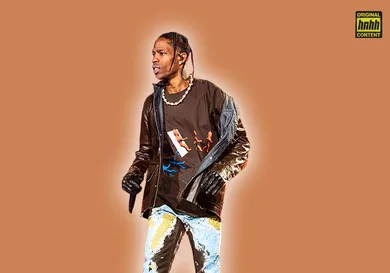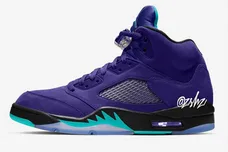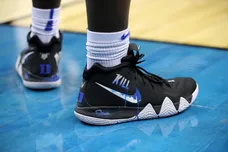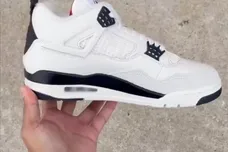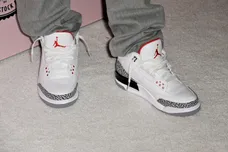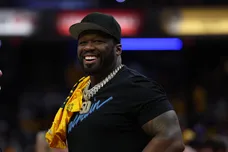When tragedy strikes, everyone is suddenly granted a newfound degree of hindsight. Armchair experts on crowd control and risk management spring up, looking to provide the definitive post-mortem on what happened and why. In other sectors of the internet sphere, such an incident is grounds for outlandish conspiracy theories to run rampant, with proponents of these ideas forgetting that they're talking about the loss of real people with loved ones who'll be forced to see it all.
This is not the intention here whatsoever.
Rather than rehash the heartbreaking events in detail, it seems like a lot of the time and energy that's been devoted to asking “what went wrong” could be put to better use by looking at the culture that's sprung up-- not just around Travis Scott, but hip-hop in general-- that took a catastrophic event such as this from highly unlikely to an unfortunate inevitability.
While Travis’ lawyers have asked for law enforcement to refrain from "finger pointing," it’d be remiss of the hip-hop community as a whole if it didn’t seek to broach the behaviours, mentalities, and branding that contributed to what’s become the biggest concert tragedy since nine fans lost their lives during Pearl Jam’s set at Denmark's Roskilde Festival in 2000.
And just as frontman Eddie Vedder told reporters that "we feel that we are ‘morally responsible’ to bring out the truth with regard to what happened that night," everyone involved in this horrendous occurrence, from the performer to the promoter, should hopefully seek to do the same.
To begin to unravel the factors that were crucial in creating the anarchic atmosphere of Astroworld, we must first start with the onset of moshing in hip-hop. Where the genre was born out of block parties in which dancing was once the priority, the arrival of a more abrasive response to the music has been gradually seeping into hip-hop since the 90s. First implanted in the minds of hip-hop heads via pioneers such as Onyx and Beastie Boys, the moshpit-- or slam dancing as it was originally known-- was an occasional sight at shows, far from a staple.
Travis Scott at Astroworld 2021. Image via HNHH. Photo shot by @frankievegara_
But the lines between hip-hop and rock have grown increasingly vague in the years since, with a growing trend of rappers even preferring to adopt the term "rockstar" when referring to themselves. In that same vein, the aesthetic of metal, grunge, and punk shows that hip-hop fans would have once turned their nose up at, have now become a prominent part of the live rap show experience. Rappers ranging from Playboi Carti to Trippie Redd will actively call for the formation of a pit onstage, while festivals such as Rolling Loud have leaned into their reputation for these frenzied scenes. In many ways, it makes a lot of sense. Just as rock music first thrived and took anchorage on the mantles of rebellion and youth, those same forces have been the lifeblood of hip-hop since its earliest days.
The moshpit has been described by psychologist Matt Jarvis, himself a veteran mosher, as a "microcosm of social psychology in which a complex set of social processes allow a high level of physical contact with a minimum of antagonism and harm." The idea of moshing is that it is "organized around not harming others," and thus, it can also be seen as a not-actually-violent "ritual violence," likened to a contact sports team such as rugby (per Jarvis).
What this means is, a mosh pit is a form of release, something that allows concert attendees to throw off the pressures of everyday life. That doesn’t mean that it doesn’t come with a host of responsibilities that, while seemingly ingrained in the punk or metalhead’s psyche, haven’t been enforced in hip-hop in anywhere near the same way.
Jarvis’ 2018 paper, "Social psychology in the mosh pit," outlines the key safeguarding measures that are put in place at rock shows, including "making contact with elbows and palms rather than fists, leaving nonmoshers untouched and helping up anyone who is knocked to the ground."
Over the years, rock acts and their fans have taken it upon themselves to ensure that the pit is a fun and relatively safe place to be. In the wake of the Astroworld tragedy, footage of artists such as the late Chester Bennington of Linkin Park making the crowd repeat the mantra of "if someone falls down, pick them up," have been widely cited as an example of what you should do when a situation arises.
WATCH: Linkin Park clip
In the very same week that the fallout of Astroworld dominated the news agenda, images of fellow concertgoers guiding a wheelchair-bound fan around the circle pit at a Slipknot show had social media users once again pointing out the disparity between this and the Houston festival.
Likewise, rappers such as Playboi Carti, ASAP Rocky, and Lil Uzi Vert have been praised for actively stepping in when things got too chaotic and stopping the show, with the former being widely celebrated for telling the crowd that their safety was his first priority.
Ultimately, it is decisive actions such as these that make up for the lack of education on how to 'properly' mosh among the hip-hop community, and with that being said, it has made some of Travis’ own statements on the practice seem reckless by comparison.
In a 2015 video with GQ entitled "How To Rage," Travis outlined his ethos on shows and the expectations that he placed on his fans.
"Since I was 6, I wanted to be a fucking wrestler," he remarked. "So in performances, I always wanted to make it feel like it was the WWF or some shit. We don't like people that just stand, whether you're Black, white, brown, green, purple, yellow, blue. We don't want you standing around, like, this is a no-stand zone… At the end of the night, you should be fucking throwing up."
Among advocating for the use of "anything you find that's gonna get you lit, whether it's your drugs, your water, your orange juice, your alcohol," Travis’ comments seem to be less about the catharsis of the moshing experience and more about pushing yourself to the limit. So, as Travis transitioned from an artist to a superstar that inspires cult-like devotion in fans, this was taken as gospel by his "ragers."
From asking all of his "real ragers" to jump the barricade to saying that he wanted to "see chaos" before his arrest at Lollapalooza 2015 and proudly tweeting that he would "let the wild ones in" if they broke through Astroworld security, to his declaration that "it ain’t a moshpit if it ain’t no injuries, got em’ stage divin’ from the nosebleeds" on his song "STARGAZING," Travis has steered into this reputation for unbridled carnage in a way that differs from how your average moshpit is viewed.
Travis Scott at Astroworld 2021 - Rick Kern/Getty Images
By prioritizing it in such a way that his fans also then pride themselves on a willingness to both inflict and suffer pain, the result is this: a fan dancing on top of an ambulance in the midst of the Astroworld chaos, preventing care to arrive to those who need it most, while declaring later that the crowd is full of "baby butt soft ass people" and further justifying his actions with a proclamation of "we rage for real."
With this sort of callousness, some sections of Travis’ fanbase acted more ruthlessly than those in the very genres that are vilified for their supposed dark worldview have ever been.
Strewn with the same imagery of hellscapes, dystopias, and transitions to the afterlife that have been a staple of the metal world, Astroworld festival 2021 has come to represent the identity crisis that Travis Scott is facing in popular culture. While he’s happy to dabble in these menacing themes and demand unruliness from his audience, he’s also a corporate entity whose demographic contains kids from elementary school on up. And while no one is suggesting that an artist should ever censor themselves for universal appeal, or that parents shouldn’t be proactive in terms of monitoring what their kids are exposed to, it’s fair to say that the increasing intensity of Astroworld 2021 didn't account for the decreasing age and maturity level of his fanbase in any way, shape or form.
Although he may have started his career as an exciting outlier, Travis has become a fully-fledged household name and pop culture figure in a way that completely transcends hip-hop. Tucked away in every crevice of culture, his likeness and products can be seen along the entire cross-section of our society.
Complete with a McDonald’s meal, a sought-after sneaker line, and a working relationship with Fortnite that’s seen him play a “virtual concert” and even have his own dancing “emote” available, Travis’ presence is unavoidable in the broader cultural world. So much so that you can’t even go to the latest Christopher Nolan blockbuster without encountering his unique brand of sonic bombast as the credits roll.
No one in hip-hop is begrudging Travis’ success. Since truly coming into his own on Rodeo, La Flame has been one of the most fiercely creative forces in the genre that has routinely pushed himself to new heights.
With that said, Travis and his team must be aware that with those major, kid-friendly brand deals-- not to mention his cartoonish portrayals in both McDonald’s commercials and on Fortnite-- his demographic was going to get younger. A lot younger.
On top of a 14-year-old losing their life and a nine-year-old being placed in a medically-induced coma after he was trampled at the event, videos have now shown that kids as young as 5 were in the crowd. In spite of this, investigations have now shown that there were no procedures in place to tackle the protocols of "dangerous crowd surges."
When you combine the fanatical raucousness that Travis has consistently inspired in his audiences, the transition to superstar status for fans of all ages increasing tenfold since the previous festival, and the failure to adequately plan for the foreseen issue of stampedes in the crowd, it’s clear that, whether he was conscious of it or chose to live in blissful ignorance, Travis, his team, and the promoters have been playing with fire.
Tragically, the inability or unwillingness to broach these issues has ended with lives prematurely and preventably cut short and, as the lawsuits roll in, and the distaste for Travis mounts across social media, it has created a dubious future for the Houston artist.
Now, all that can be hoped for is both a massive overhaul of how fans conduct themselves, as well as for Travis to acknowledge his role in what happened and for him to self-reflect on how and where it could’ve all gone so wrong.
